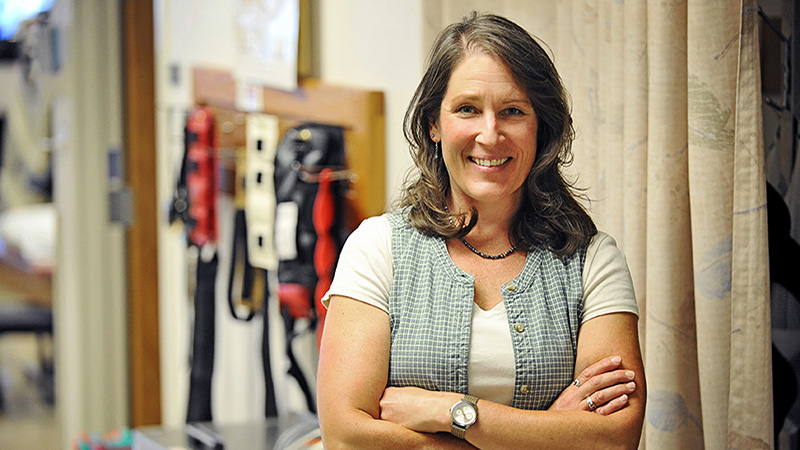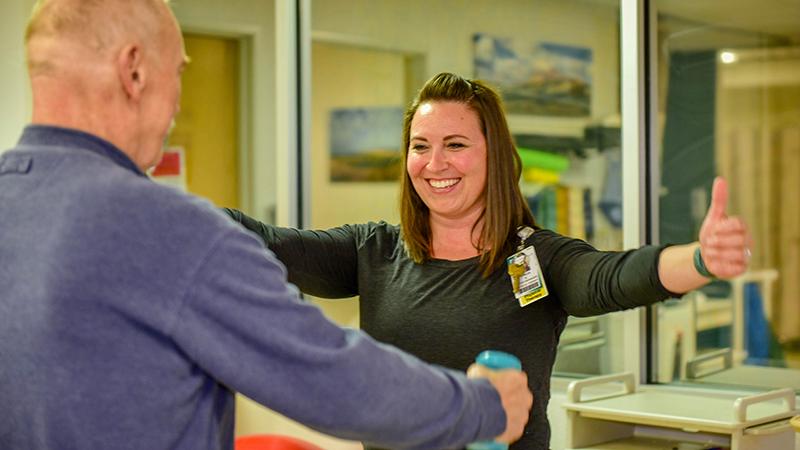
June 29, 2021
When one thinks of a wound, many of us think about a trip and fall as a kid, a brief stint of tears, Mom kissing it better, applying some mercurochrome and putting a band-aid on.
It was all too soon forgotten because it would quickly heal on its own. However, as we age, wound healing can become more complicated and often prolonged, especially if we have other health issues that interfere with healing. Conditions that can interfere with healing can include advanced age, diabetes, heart and blood flow issues, autoimmune diseases, or swelling in our legs. All of these conditions usually result in a chronic wound. So what does it mean to have a chronic wound?
Chronic means that a wound, no matter the cause, has not healed in a normal time frame. In general, a wound that takes longer than 4-8 weeks (depending on severity) is considered chronic and needs medical intervention to help it complete the healing process.
So many still rely on old wives' tales of how to treat a wound at home and often unknowingly are causing more harm than good. We should avoid some of these tried but not-so-true remedies, as we have learned that they delay healing. Hydrogen peroxide is particularly controversial, mainly because its usage is still debatable today. More information continues to accumulate that indicates that it slows the entire healing process by killing the bad cells and the good ones.
Alcohol is another commonly used source for cleaning wounds. While it is true that alcohol can work to minimize germ activity on the wound surface, it can damage good tissue, and it hurts! When you're dealing with intact skin (skin that's not broken), it's hard to find a better way to kill bacteria than iodine. That is why we use it in a medical setting to clean skin before surgery, for example.
However, when there is broken skin, iodine is toxic to healing cells. The best source of wound cleansing is good old soap and water applied for 20-30 seconds (sing Happy Birthday to time yourself). Rinse it well with water, pat it dry, and apply a bandage to cover and protect it daily.
The formation of a scab is another misinterpretation as a healthy sign of wound healing. This progression of fluid and debris hardening into a covering over your cut or scrape interferes with the entire healing process. It robs the fragile new tissue of essential moisture and leaves it more susceptible to infection.
It is desirable to keep a wound moist (but not too moist) by using appropriate ointment and good bandages to protect the new cells as they form at the wound edges. If a scab does form, do not pick at it as it makes it more likely that you will develop an infection.
One old wives tale that has proven to be true is the use of honey. It is one of the oldest home remedies for wound care dating back to ancient Europe. People would apply it directly to wounds in the hope that it would help prevent infection.
It turns out they were on to something. Medical grade honey has been proven to be nontoxic, prevents heavy formation of bacteria, donates moisture, and has antioxidant and anti-inflammatory properties. The most effective honey is Manuka and Leptospermum honey, which are medical grade and readily available online and in pharmacies. Make sure not to use honey from the little bear in your cupboard – it is not medical grade; it is only meant for making your toast taste good.
Over the past year, many were unable to seek medical care or just chose to put it on hold due to the pandemic. Unfortunately, this resulted in increased wound complications often resulting in hospitalization, or worse – loss of limb. So if you have a wound that seems not quite right or is just taking too long to heal, do not ignore it; it's time to see your doctor to get on the road to healing.
Jane O'Driscoll, PT, WCC, CLT-LANA, CSWS is the St. Peter's Health Wound Care Center Program Director in Helena, Mont. She grew up in Bozeman and received her Bachelor of Science in Business Management from Montana State University in 1989. She went on to receive her Master of Science in Physical Therapy from the University of Montana in 1999. She is a Certified Skin and Wound Specialist and a Certified Lymphedema Therapist. She has worked in direct patient wound care since 1999 and is now the Director of the St. Peter’s Health Wound Care Center.


